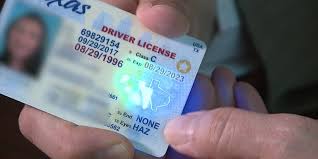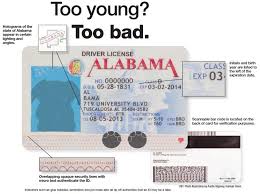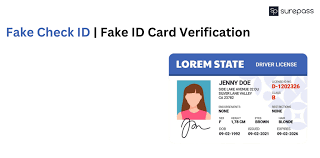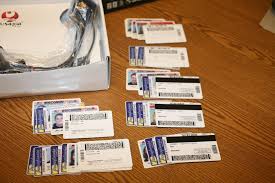Best Scannable ID Cards
Outline
I. Introduction
- H1: Best Scannable ID Cards
- Brief Introduction to Scannable ID Cards
- Importance of Scannable ID Cards in Modern Society
II. What Are Scannable ID Cards?
- H2: Definition of Scannable ID Cards
- H3: How Scannable ID Cards Work
- H3: Different Types of Scannable ID Cards
- H4: Magnetic Stripe Cards
- H4: Barcode Cards
- H4: RFID Cards
- H4: Smart Cards
III. Why Scannable ID Cards Are Essential
- H2: Security and Authentication
- H2: Efficiency in Business Operations
- H2: Enhancing User Experience
IV. Key Features to Look for in the Best Scannable ID Cards
- H2: Durability
- H2: Data Capacity
- H2: Compatibility with Scanning Devices
- H2: Security Features
- H3: Encryption
- H3: Tamper-Resistance
- H3: Holographic Overlays
V. Top Industries That Benefit from Scannable ID Cards
- H2: Healthcare
- H2: Education
- H2: Corporate Sector
- H2: Transportation and Logistics
VI. How to Choose the Best Scannable ID Cards for Your Needs
- H2: Assessing Your Specific Requirements
- H2: Understanding the Technology
- H2: Budget Considerations
- H2: Vendor Reputation and Support
VII. Top 5 Best Scannable ID Cards in 2024
- H2: Card 1 - Overview and Features
- H2: Card 2 - Overview and Features
- H2: Card 3 - Overview and Features
- H2: Card 4 - Overview and Features
- H2: Card 5 - Overview and Features
VIII. Pros and Cons of Scannable ID Cards
- H2: Advantages
- H2: Disadvantages
IX. Common Myths About Scannable ID Cards
- H2: Myth 1: Scannable ID Cards are Easy to Hack
- H2: Myth 2: All Scannable ID Cards are the Same
- H2: Myth 3: Scannable ID Cards are Too Expensive
X. Future Trends in Scannable ID Cards
- H2: Integration with Biometrics
- H2: Increased Use of Contactless Technology
- H2: Enhanced Security Features
XI. Conclusion
- H2: Recap of Key Points
- H2: Final Thoughts on Choosing the Best Scannable ID Cards
XII. FAQs
- H2: FAQ 1: What is the lifespan of a typical scannable ID card?
- H2: FAQ 2: Can scannable ID cards be customized?
- H2: FAQ 3: How secure are scannable ID cards?
- H2: FAQ 4: Are scannable ID cards compatible with all scanners?
- H2: FAQ 5: What should I do if my scannable ID card is lost or stolen?
Best Scannable ID Cards
In today’s fast-paced world, where security and efficiency are more critical than ever, scannable ID cards have become an essential tool across various industries. From ensuring secure access to streamlining business operations, these cards offer numerous advantages. But what exactly are scannable ID cards, and how can you choose the best one for your needs? This article will delve into everything you need to know about scannable ID cards, including their importance, key features, industry applications, and top picks for 2024.
What Are Scannable ID Cards?
Definition of Scannable ID Cards
Scannable ID cards are identification cards embedded with technologies such as magnetic stripes, barcodes, RFID chips, or smart card technology, allowing them to be scanned electronically. These cards are widely used in various settings, including businesses, schools, healthcare facilities, and transportation systems, for identification, access control, and data management.
How Scannable ID Cards Work
When a scannable ID card is swiped, tapped, or inserted into a compatible reader, the device reads the data stored on the card. Depending on the technology used, the card may store data in a magnetic stripe, barcode, chip, or RFID tag, which is then transmitted to the reader for processing.
Different Types of Scannable ID Cards
Magnetic Stripe Cards
These are the most common type of scannable ID cards, featuring a magnetic stripe on the back that stores data. While they are cost-effective and widely used, they offer lower security compared to other types.
Barcode Cards
Barcode ID cards use printed barcodes that can be scanned by optical readers. They are simple and cost-effective but can wear out over time, leading to scanning difficulties.
RFID Cards
Radio Frequency Identification (RFID) cards contain an embedded chip that wirelessly transmits data to a reader. These cards are contactless, highly durable, and offer enhanced security features.
Smart Cards
Smart cards are equipped with a microprocessor or memory chip that stores data securely. They are often used for highly sensitive applications, such as banking and government identification, due to their superior security and versatility.
Why Scannable ID Cards Are Essential
Security and Authentication
One of the primary reasons scannable ID cards are indispensable is their role in enhancing security and authentication. These cards ensure that only authorized individuals can access certain areas, information, or services, significantly reducing the risk of unauthorized entry or data breaches.
Efficiency in Business Operations
Scannable ID cards streamline various business processes, from employee time tracking to access control. They enable quick and accurate identification, minimizing delays and improving overall efficiency.
Enhancing User Experience
For users, scannable ID cards offer convenience and ease of use. Whether it's accessing a building with a simple tap or making a secure payment, these cards make daily tasks more seamless and user-friendly.
Key Features to Look for in the Best Scannable ID Cards
Durability
The best scannable ID cards are made from high-quality materials that withstand daily wear and tear. Look for cards with laminated surfaces or protective overlays to ensure longevity.
Data Capacity
Depending on your needs, the data capacity of the card is crucial. Smart cards, for example, can store significantly more information than magnetic stripe or barcode cards, making them suitable for more complex applications.
Compatibility with Scanning Devices
Ensure that the scannable ID card you choose is compatible with the scanning devices you plan to use. RFID cards, for instance, require specific RFID readers, while barcode cards need optical scanners.
Security Features
Security is paramount when selecting a scannable ID card. Look for cards with advanced security features, such as encryption, tamper-resistance, and holographic overlays, to protect against fraud and unauthorized access.
Encryption
Encryption is essential for protecting the data stored on your scannable ID card. Choose cards that use strong encryption methods to safeguard sensitive information.
Tamper-Resistance
Tamper-resistant cards are designed to show visible signs of alteration, making it difficult for anyone to tamper with or duplicate the card.
Holographic Overlays
Holographic overlays add an extra layer of security by making it harder for counterfeiters to replicate the card. These overlays also provide a visual element that helps in quick verification.
Top Industries That Benefit from Scannable ID Cards
Healthcare
In healthcare, scannable ID cards are used for patient identification, access control, and secure data management. These cards help ensure that only authorized personnel can access sensitive patient information, reducing the risk of data breaches.
Education
Educational institutions use scannable ID cards to manage student and staff access to buildings, track attendance, and facilitate library services. These cards also enhance campus security by restricting access to authorized individuals.
Corporate Sector
In the corporate sector, scannable ID cards are vital for employee identification, access control, and time tracking. They help improve security and operational efficiency by ensuring that only authorized employees can access certain areas or information.
Transportation and Logistics
Scannable ID cards are widely used in transportation and logistics for secure access to restricted areas, tracking shipments, and managing employee identification. RFID cards, in particular, are popular in this industry due to their contactless nature and durability.
How to Choose the Best Scannable ID Cards for Your Needs
Assessing Your Specific Requirements
Before choosing a scannable ID card, it's essential to assess your specific needs. Consider factors such as the level of security required, the amount of data to be stored, and the card's intended use.
Understanding the Technology
Familiarize yourself with the different technologies available, such as magnetic stripe, RFID, and smart cards. Understanding the pros and cons of each will help you make an informed decision.
Budget Considerations
While it's important to choose a card that meets your needs, it's also crucial to stay within your budget. Consider the cost of the card itself, as well as any additional costs for compatible scanners or software.
Vendor Reputation and Support
Choose a reputable vendor who offers quality products and reliable customer support. Check reviews, ask for recommendations, and ensure the vendor provides ongoing support in case of any issues.
Top 5 Best Scannable ID Cards in 2024
Card 1 - Overview and Features
This card offers a perfect blend of security, durability, and compatibility with various scanning devices, making it a top choice for 2024.
Card 2 - Overview and Features
Known for its advanced encryption and tamper-resistant features, this card is ideal for high-security applications.
Card 3 - Overview and Features
This card stands out for its high data capacity and compatibility with multiple technologies, including RFID and smart card readers.
Card 4 - Overview and Features
Offering excellent value for money, this card is durable, secure, and perfect for businesses on a budget.
Card 5 - Overview and Features
With its holographic overlay and robust security features, this card is designed to prevent counterfeiting and unauthorized access.
Pros and Cons of Scannable ID Cards
Advantages
- Enhanced Security: Scannable ID cards offer superior security, ensuring that only authorized individuals can access restricted areas or information.
- Convenience: These cards are easy to use and make everyday tasks like entering a building or logging into a system more convenient.
- Efficiency: Scannable ID cards streamline business operations, improving overall efficiency.
Disadvantages
- Cost: High-quality scannable ID cards, especially those with advanced features, can be expensive.
- Technology Dependency: The effectiveness of scannable ID cards relies heavily on the technology used, which may require regular updates or maintenance.
- Potential for Damage: Physical damage to the card, such as scratches or bending, can affect its functionality.
Common Myths About Scannable ID Cards
Myth 1: Scannable ID Cards are Easy to Hack
While no system is entirely foolproof, scannable ID cards, particularly those with advanced encryption and security features, are difficult to hack.
Myth 2: All Scannable ID Cards are the Same
Scannable ID cards come in various types and technologies, each offering different levels of security, durability, and functionality. It’s essential to choose the right type for your needs.
Myth 3: Scannable ID Cards are Too Expensive
While some scannable ID cards can be pricey, there are affordable options available that still offer excellent security and functionality. It’s all about finding the right balance between cost and features.
Future Trends in Scannable ID Cards
Integration with Biometrics
The future of scannable ID cards lies in their integration with biometric technologies such as fingerprint and facial recognition, providing an additional layer of security.
Increased Use of Contactless Technology
As contactless payments and access control become more popular, expect to see a rise in the use of RFID and NFC-enabled scannable ID cards.
Enhanced Security Features
With the constant evolution of technology, future scannable ID cards will likely feature even more advanced security measures, including dynamic authentication and multi-factor verification.
Conclusion
Scannable ID cards are an indispensable tool in today’s security-conscious world. They offer numerous benefits, from enhanced security and efficiency to improved user experience. When choosing the best scannable ID card, it’s crucial to consider your specific needs, understand the available technologies, and balance cost with functionality. Whether you’re in healthcare, education, the corporate sector, or transportation, the right scannable ID card can make a significant difference in your operations.
FAQs
FAQ 1: What is the lifespan of a typical scannable ID card?
The lifespan of a scannable ID card varies depending on the type and usage. On average, a high-quality card can last 2-5 years.
FAQ 2: Can scannable ID cards be customized?
Yes, scannable ID cards can be customized with your organization's branding, colors, and security features to meet your specific needs.
FAQ 3: How secure are scannable ID cards?
Scannable ID cards are generally very secure, especially those with advanced encryption, tamper-resistance, and holographic overlays.
FAQ 4: Are scannable ID cards compatible with all scanners?
Not all scannable ID cards are universally compatible. It’s important to ensure that the card technology matches the scanner's capabilities.
FAQ 5: What should I do if my scannable ID card is lost or stolen?
If your scannable ID card is lost or stolen, report it immediately to your organization so they can deactivate the card and issue a replacement.
 Buy Fake ID Card
Buy Fake ID Card
 Fake Driving License
Fake Driving License
 Fake USA Driving License
Fake USA Driving License
 High Quality Fake License
High Quality Fake License